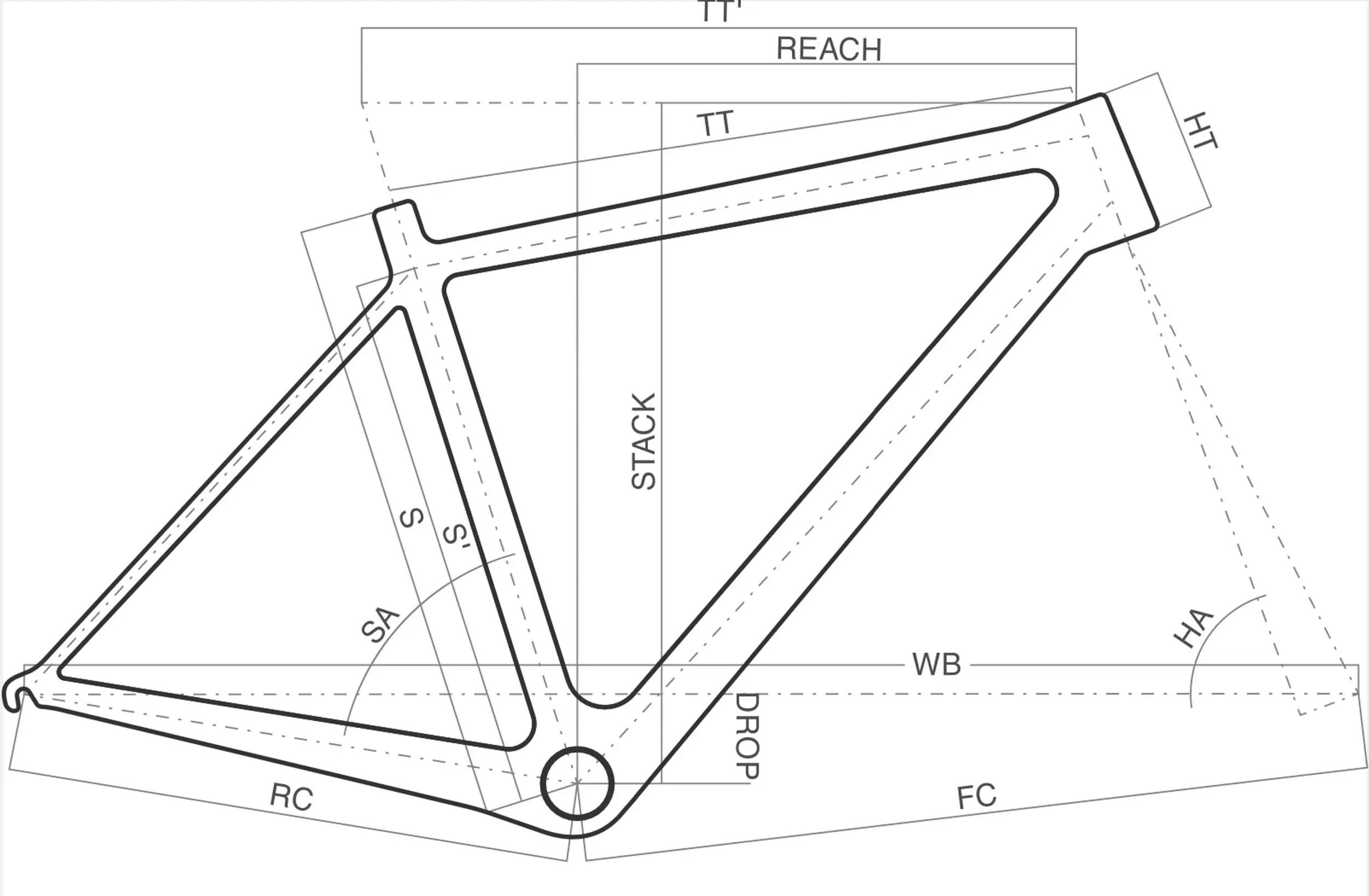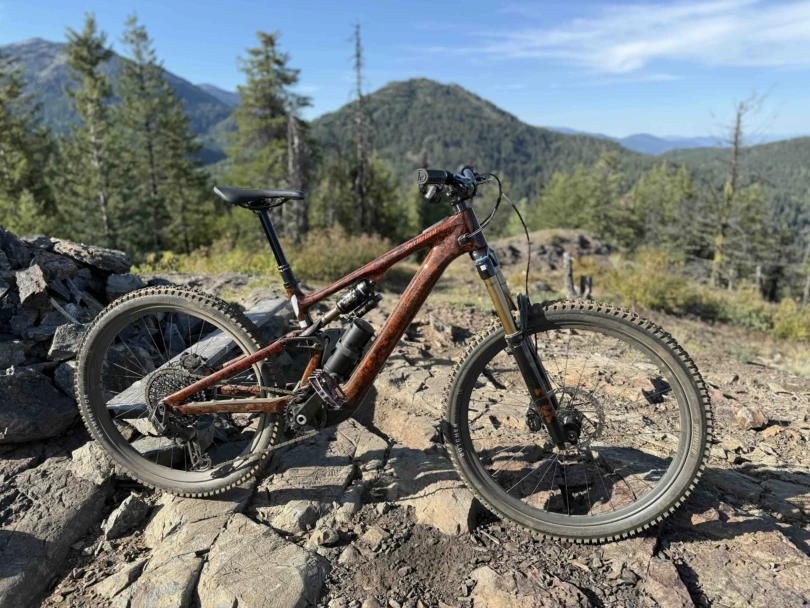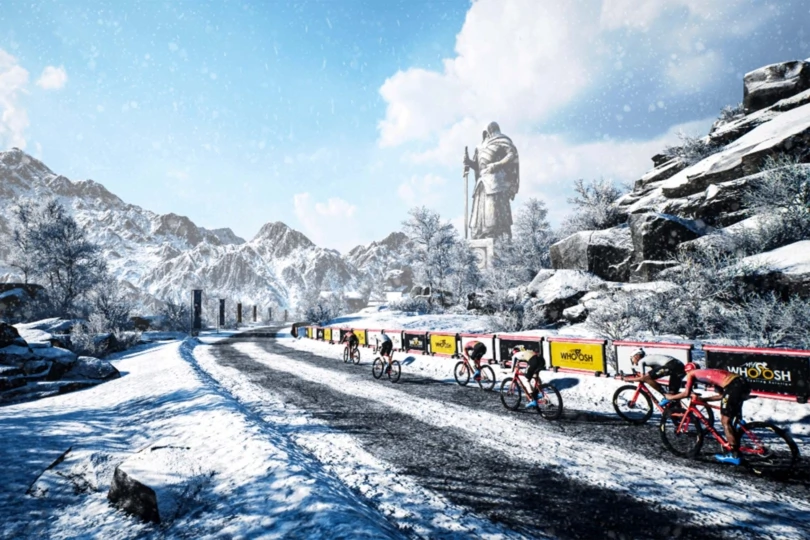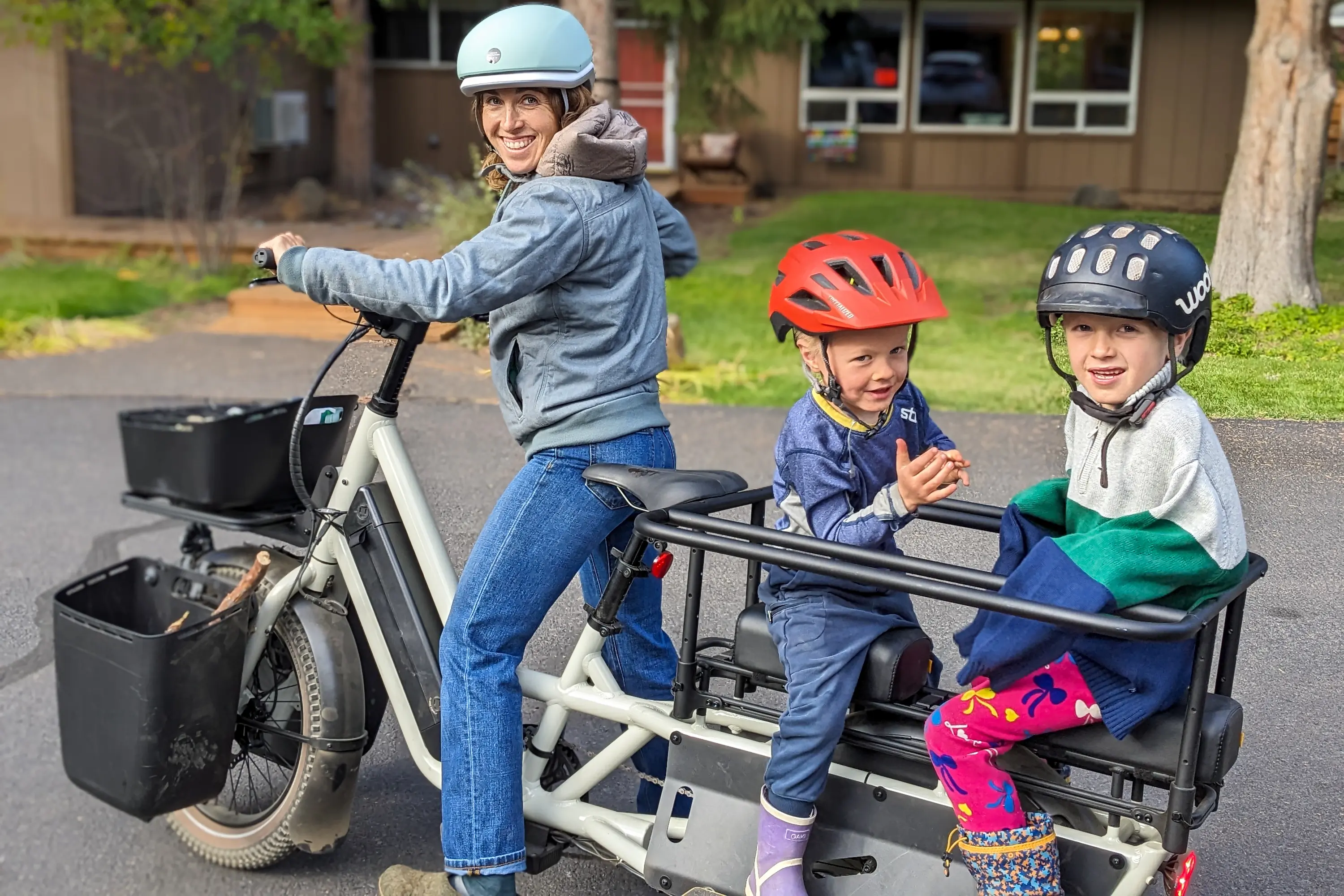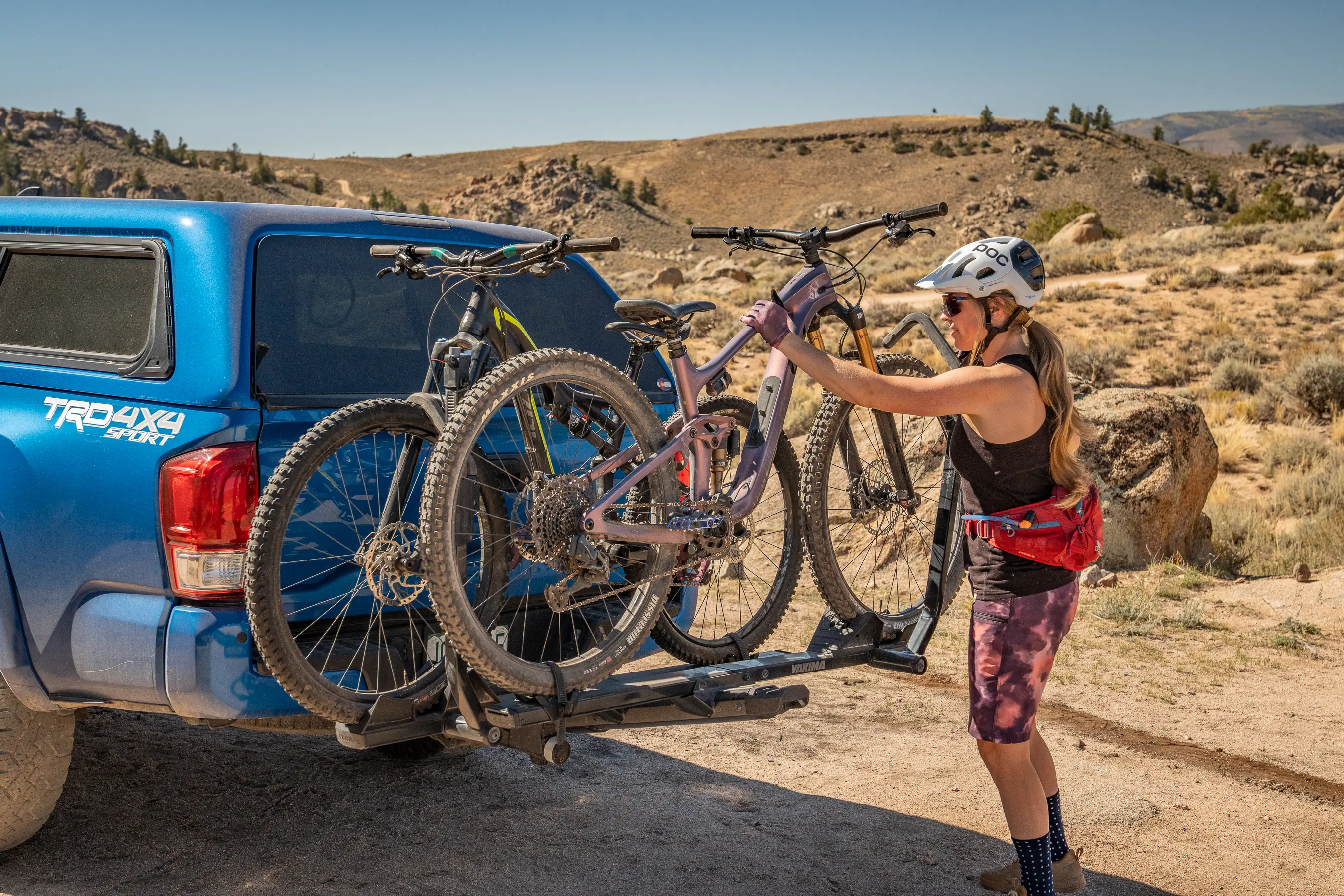Bike manufacturers have a bit of a tinkering habit.
New models of our favorite bikes come out laden with the latest tech and adorned in splashy new colors every year.
While those features are the easiest to notice at first glance, more often than not, the slight deviations in design that change measurements, angles, and dimensions from previous models are far more consequential.
Such changes to bike geometry are where we get phrases like “faster than ever” or “the most compliant bike we’ve ever built,” to name only a few conventions.
Even slight adjustments to bicycle geometry significantly impact how bikes feel, look, and ride.
Bike geometry involves tedious measurements, math, charts, and diagrams that can look intimidating. But geometry shouldn’t be a boogeyman; you just have to know where to look.
Key Bike Geometry Measurements
Cyclists should know key measurements before deciding which bike to ride, including stack, reach, wheelbase, head tube angle, rake, trail, and bottom bracket drop.
These measurements can give riders a good idea of how a bike will feel and handle, and whether it may be a good fit.
Stack and Reach

Stack measures the vertical distance from the center of a bicycle’s bottom bracket to the midpoint of the top of the head tube. Reach is the horizontal distance between the same two points.
These two measurements affect a rider’s position on the bike and whether we would typically consider a bike aggressive, racy, or more of a comfort or endurance option.
Bikes with longer reach and shorter stacks will put riders in a low, aerodynamic position. These bikes favor riders who intend to go fast and prefer aerodynamic efficiency over all-day comfort. And they have the flexibility to maintain the aggressive position in relative comfort.

Conversely, bikes with a shorter reach and higher stack allow riders to sit more upright, taking pressure off the upper body and back for a more comfortable profile. Riders who spend long hours in the saddle and prioritize comfort typically go for bike geometry with shorter reach and stack. Words like “endurance” are often built into their names or descriptions.
Wheelbase and Chainstay Length
A bike’s wheelbase is the distance between the front and rear axles. Essentially, it’s how much space there is between the wheels. Bikes with a shorter wheelbase will handle with more snap and have a smaller turn radius. Those with longer wheelbases tend to feel more stable but take a bit more effort to turn.
Chainstay length is the space between the center of the bottom bracket and the rear axle. Bikes with shorter chain stay tend to be more nimble.
Head Tube Angle
The head tube angle of a bike is the angle at which a line would travel from the center of the head tube down the steering axis to the floor (the dotted line in the image below).

The steeper the head tube angle is (larger number), the less input a rider needs to make in the cockpit for maneuvering. Steep head tube angles are a mainstay of aggressive race bikes that need to turn on a dime without requiring much from the rider. There is, however, a trade-off. While bikes with steep head tube angles have quick handling, they can feel a bit twitchy, especially at lower speeds or across rougher roads and terrain.
Bikes with more slack or less steep head tube angles (smaller number) feel much more stable but do not respond with the snappiness of their steep-angle counterparts while maneuvering.
Rake (Fork Offset) and Trail
A bike’s rake or fork offset is the distance between the front wheel’s axle and a line drawn through the center of the head tube to the ground. Bicycle forks place the front axle forward of this line. More rake typically means a bike will be a more comfortable and stable descender; less rake or offset means more attention will be required. However, the more rake a bike has, the less responsive steering becomes.
The trail is the distance between the contact patch of the front tire and the point at which the imaginary line through the center of the head tube hits the ground. Bikes with less trail tend to be quick handling and nimble. They can, however, also feel a bit twitchy. These bikes have steep head tube angles and less rake, so the front wheel is more firmly underneath that rider than further out in front.
Bottom Bracket Drop
The bottom bracket drop is the distance the center of the bottom bracket sits beneath the front and rear axles. To find this measurement, draw an imaginary line between the two wheel axles, then measure the distance from the bottom bracket’s center.

Bikes with lower bottom brackets feel much more planted while cornering, lowering the rider’s center of gravity. However, the lower the bottom bracket, the closer the pedals get to the ground.
The measurement is crucial for off-road and cyclocross bikes. Higher bottom brackets give more clearance to overcome obstacles and more space to roll over mud and debris. They also allow pedaling further into turns, providing more clearance for the inside pedal as the bike leans over.
Pedal strikes can be among the nastiest ways to go down, so it’s important to think about how to pair cranks appropriately with the height of a bottom bracket.
Seat Tube Length, Angle, and Standover
Seat tube length and angle are exactly what they sound like: the actual length of a seat tube and the angle at which it sends a seat post out of the frame. These measurements are essential because raising a seat post up and down also moves the seat forward and backward. This impacts how the stack and reach of a frame affect the rider.
“Effective” seat tube length is what the seat tube length would be if the top tube were parallel to the ground (most top tubes are not). This number is more useful when comparing frames, as modern bikes have top tubes that slope down from the head tube to the seat tube. And the amount of slope varies from bike to bike.
Standover height is the height of the bike’s top tube from the ground. For people who step off of bikes, it’s essential to know whether you can put a foot down comfortably.
This bike geometry measurement can be tricky. For example, most cyclocross bikes have higher top tubes than gravel bikes because their riders need more space in the center triangle to throw the bike over their shoulder.
There is more likelihood of hitting the top tube on bikes with higher standover measurements. They can also be a little more challenging to mount and dismount.
Adjustments to Bike Geometry
Of course, there are accessories riders can buy to help dial in fit further if a bike’s factory geometry is a bit off. Spacers, stems with increased reach or rise, shorter or longer crank arms, seat posts with a setback or no setback, and almost endless handlebar variations can all drastically alter the feel of a bike, as can bigger modifications like different forks.
But, as riders use aftermarket accessories to tinker with a bike’s fit, they risk getting rid of the features of a bike’s design that enable it to ride as intended.
Understanding bike geometry is an essential first step in selecting a bike, but there’s nothing quite like hopping on and going for a ride to get to know how a bike fits and handles.
